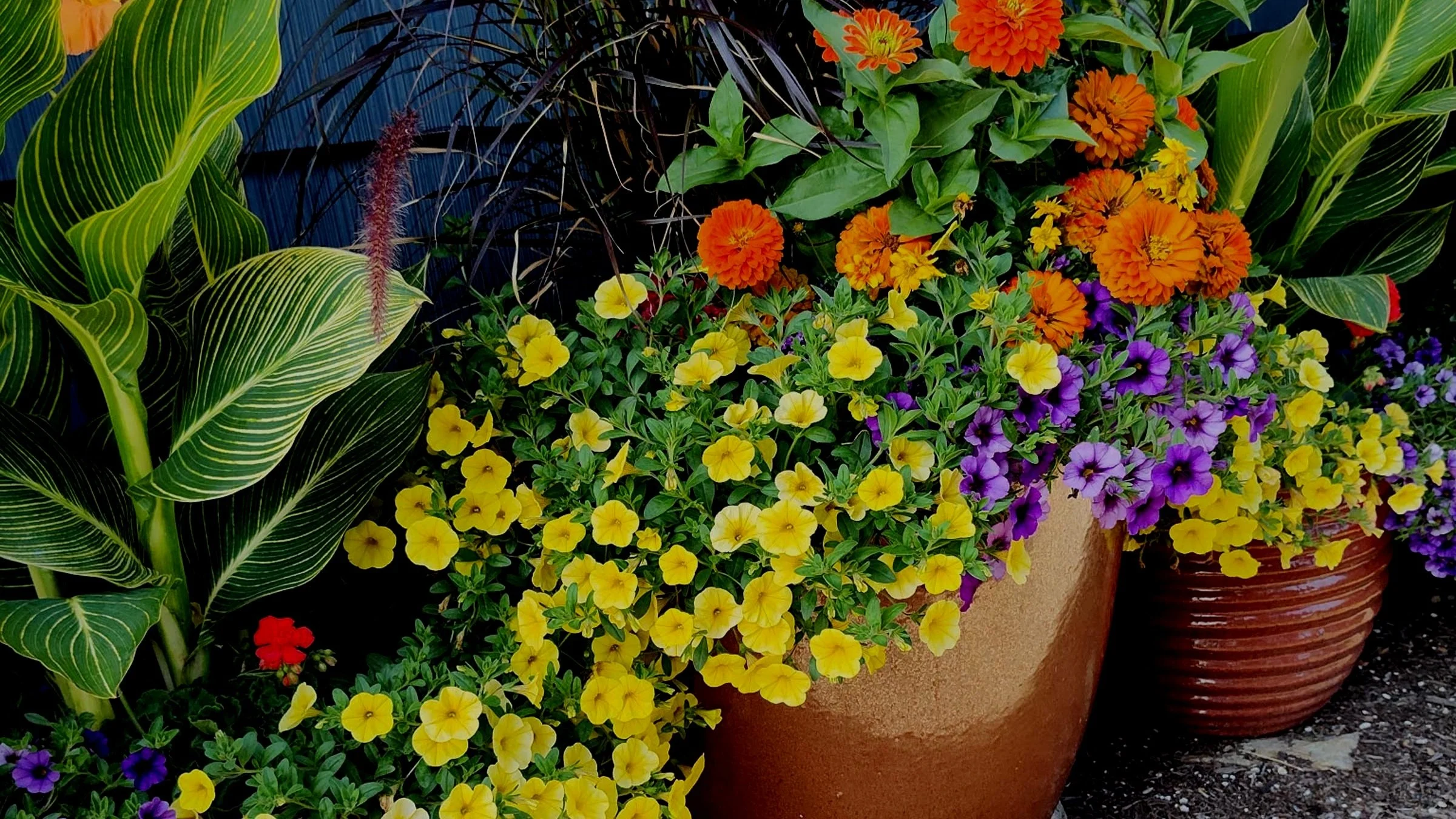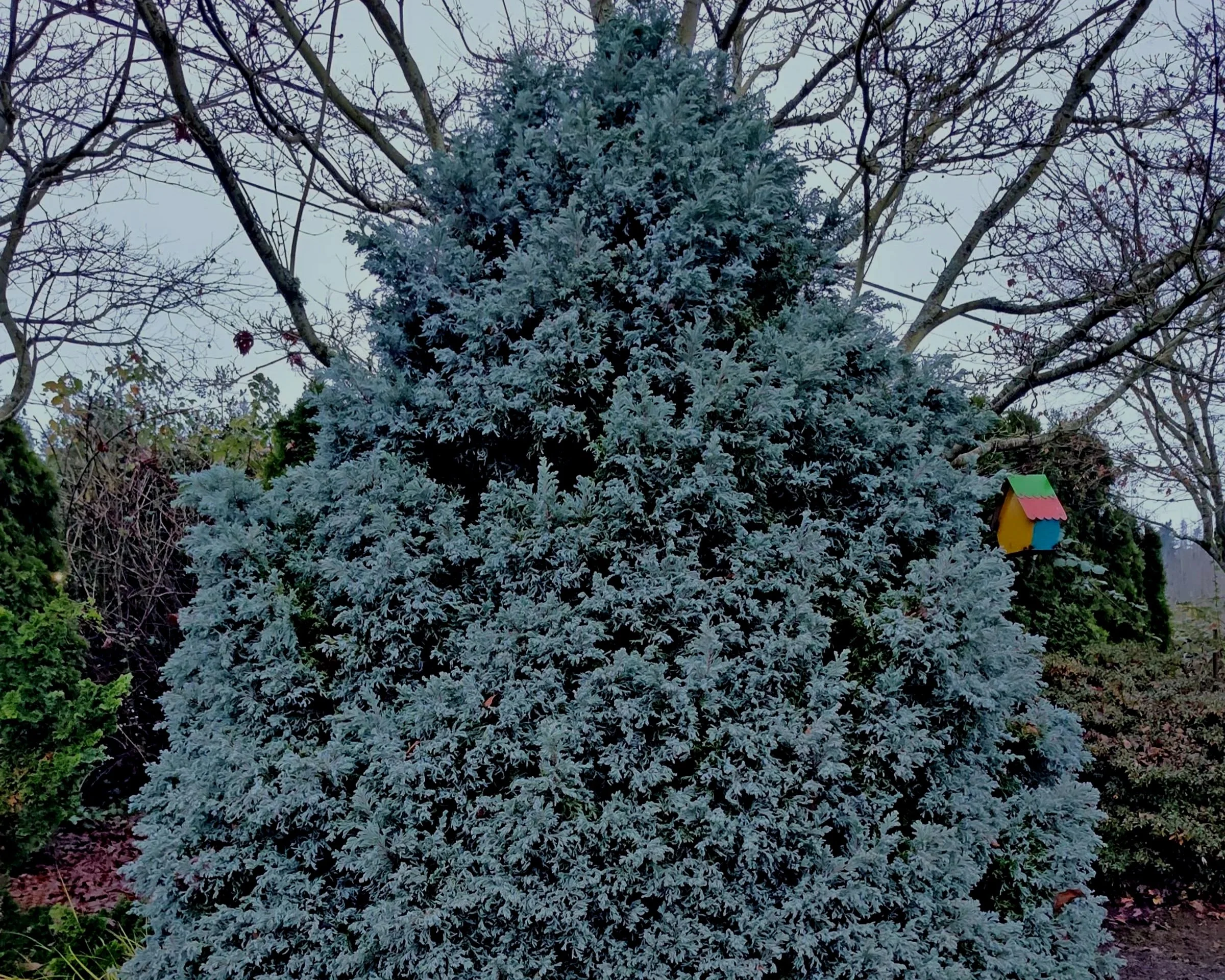We began our travels down the road to annuals last week, so I am not making any U-turns just yet as this week we will continue to talk color and tropical plants. The vast majority of our landscapes are filled with various hardy garden gems, but adding some annual color and bold foliage can be the perfect complements for summer.
Annual plants can simply be composted in the fall after frost, eventually making their way to that great compost heap in the sky. Some can be brought indoors as houseplants, others kept growing in a heated greenhouse, or some even cut back and stored in a cool basement or shed that does not freeze. My own gardening mother finally allowed me to replace her Geraniums this year. Her collection was going on thirty years or so and (sorry Mom!) they were getting tired. I am bringing this up to let you know that it is perfectly acceptable to grab fresh annuals each season or to save some and try to winter them over… it is totally up to you. I may just have to bring this topic up again this fall and discuss techniques to overwinter plants.
One major key to success with annuals and tropicals over the summer is an obvious one, fertilizer. Many gardeners I converse with swear up and down that they feed their plants regularly, but do they really? When planting color in your pots, baskets, window boxes or in-ground garden spots, feed everything, again and again and then again! Using a time-release type fertilizer like Osmocote may work for some, but there are definitely other options as well. I use two organics to start with when planting any color; Ultra Bloom and Rose/Flower food from E.B. Stone Organics, mixing them both in with the soil. Either one of these products can be reapplied every six weeks, all season long, to keep things thriving. A water-soluble fertilizer can also be introduced to supplement these granular foods. Many folks are familiar with Miracle-Gro, but the better choice is Sea Grow – a hybrid synthetic/organic water-soluble food that works nicely. Gardeners can choose the all-purpose blend (16-16-16) or the blooming formula (4-26-26) if you really want to maximize flower power. Annuals and bold tropical plants LOVE food and will give you the impact desired if they are fed every couple of weeks with Sea Grow. Simply mix it in a watering can, apply, and allow it to feed both through the foliage and the root system.
To keep your annuals fresh throughout the summer, fertilizing helps provide maximum color, but a couple of other factors are useful to keep in mind. Although many annuals now are what we call “self-deadheading” (meaning that there is no need to pinch of flowers here and there so that they re-bloom), some deadheading here and there will still keep things a bit more tidy and fresh. Go OCD like me and patrol your color weekly, as a little pinch here and a little snip there will keep your plants looking prime. Pot size, especially when we talk hanging baskets, also matters. I see gardeners making two mistakes on occasion; over-planting their pots or simply not getting a large enough pot for all the color they want to plant in it. Packing a 12-inch hanging basket will look incredible in May and June, but as the summer progresses the soil becomes filled with roots and they become hard to keep irrigated, eventually running out of gas. The larger the basket the better! If you plant up your own, some patience is my other piece of advice. Maybe try a few less plants in that basket, giving them room to root and last longer. This is the same with pots, no need to cram extra annuals into a small space. Seeing a little soil in between them is not the end of the world, you can watch them thrive and fill in as they grow.
I mentioned some interesting plants last week, and here are more ideas worthy of consideration…
Go vertical with an annual vine. Long blooming and vining plants like Chilean Jasmine (Mandevillea) and Black Eyed Susan Vine (Thunbergia) climb like crazy each summer and provide some serious flower power. Chilean Jasmine traditionally comes in the white/pink/red tones, but this year I have seen coral, yellow, orange, and now double flowers for added impact. Black Eyed Susan Vine offers bright options like pink, yellow, red and orange. Give these all maximum sun, for sure. Whether planted in the ground or in a larger container, try a fun metal obelisk, a simple trellis, or even just a post to add some height with climbing annual color.
Keep your hummingbirds happy. This is an important one to me personally, as there are not many things better than watching these astounding creatures dart around gathering sweet nectar. There are countless flowers, including many annuals, that will attract them, but some of best are flavors of Salvia. There are many perennial varieties of Salvia, but there are also some striking ones that I use an annuals. Sometimes we call these “temperennials”; as in “if they come back, great, if not, no worries mate, I will buy you again next year.” If you like some pink grab a ‘Wendy’s Wish’, or if you like blue to purple quite a few others will surely catch your fancy. ‘Amistad’, ‘Black and Blue’ and many others may come back, but I consider them annuals typically. Go bold in orange, red or purple with the ‘Skyscraper Series’, big old flowers and excellent foliage. There is even the ever popular ‘Hot Lips’, the perfect “temperennial” example, as some years they come back and others they do not. If you are trying to keep your Salvia happy over the winter, keep in mind that it is not necessarily the cold, but rather the wet that gets them. Keeping them high and dry in well-drained soil gives them the best chance to come back the following spring.
The Angel’s Trumpet calls. Both Brugmansia and Datura plants are classified as “Angel’s Trumpet” and although these plants are slightly different, their use as tropical specimens is the same. Huge trumpet flowers are often fragrant, available in most colors in the rainbow, and really provide that “WOW” factor. Using these in pots (or in the ground) as a summer thriller is perfect since they both sport showy flowers and exquisite foliage (sometimes even variegated). These love food and water, so keep them happy by caring for them all summer long, and they will give you months of enjoyment.
Get your Coleus on. Coleus is without a doubt one my favorite foliage plants. These were traditionally only for shade, but these days there are many flavors that thrive in hot sun, opening up even more possibilities. As we talk thriller plants, these can be found in a proverbial rainbow of color options, sporting intricately variegated and splashed foliage. You can use these, as I do, to compliment any color combination, and provide that ultimate pop of foliage that wows your garden visitors in both sun and shade.
Tis the season of annual color, so be sure to visit your local garden center and gaze upon the floriferous glory. Plan out your pots, your baskets, and those impact color spots in the landscape and get planting now. Allow horticulturists to assist you in choosing great combinations for sun or shade, creating the perfect pop that matches your preferences. The impact of color should not be undervalued and is sure to brighten up your home and landscape for the summer season!
Remember leaves up, roots down…



